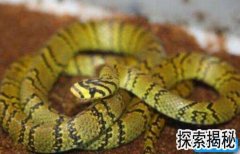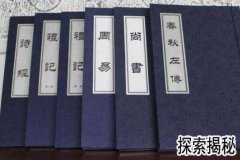谁给我新目标八年级英语的语法内容啊
Ⅰ. 初中英语八种时态归纳复习
时态是英语学习中一个至关重要的内容,广大初中学生在实际运用时,往往对时态总是倍感棘手,下面我们就归纳复习一下这几种时态。
一、一般现在时:
概念:经常、反复发生的动作或行为及现在的某种状况。
时间状语:
always, usually, often, sometimes, every week (day, year, month…), once a week, on Sundays, etc.
基本结构:①be动词;②行为动词
否定形式:①am/is/are+not;②此时态的谓语动词若为行为动词,则在其前加don't,如主语为第三人称单数,则用doesn't,同时还原行为动词。
一般疑问句:①把be动词放于句首;②用助动词do提问,如主语为第三人称单数,则用does,同时,还原行为动词。
二、一般过去时:
概念:过去某个时间里发生的动作或状态;过去习惯性、经常性的动作、行为。
时间状语:ago, yesterday, the day before yesterday, last week(year, night, month…), in 1989, just now, at the age of 5, one day, long long ago, once upon a time, etc.
基本结构:①be动词;②行为动词
否定形式:①was/were+not;②在行为动词前加didn't,同时还原行为动词。
一般疑问句:①was或were放于句首;②用助动词do的过去式did 提问,同时还原行为动词。
三、现在进行时:
概念:表示现阶段或说话时正在进行的动作及行为。
时间状语:now, at this time, these days, etc.
基本结构:am/is/are+doing
否定形式:am/is/are+not+doing.
一般疑问句:把be动词放于句首。
四、过去进行时:
概念:表示过去某段时间或某一时刻正在发生或进行的行为或动作。
时间状语:at this time yesterday, at that time或以when引导的谓语动词是一般过去时的时间状语等。
基本结构:was/were+doing
否定形式:was/were + not + doing.
一般疑问句:把was或were放于句首。
五、现在完成时:
概念:过去发生或已经完成的动作对现在造成的影响或结果,或从过去已经开始,持续到现在的动作或状态。
时间状语:recently, lately, since…for…,in the past few years, etc.
基本结构:have/has + done
否定形式:have/has + not +d one.
一般疑问句:have或has。
六、过去完成时:
概念:以过去某个时间为标准,在此以前发生的动作或行为,或在过去某动作之前完成的行为,即“过去的过去”。
时间状语:before, by the end of last year(term, month…),etc.
基本结构:had + done.
否定形式:had + not + done.
一般疑问句:had放于句首。
七、一般将来时:
概念:表示将要发生的动作或存在的状态及打算、计划或准备做某事。
时间状语:tomorrow, next day(week, month, year…),soon, in a few minutes, by…,the day after tomorrow, etc.
基本结构:①am/is/are/going to + do;②will/shall + do.
否定形式:①was/were + not; ②在行为动词前加didn't,同时还原行为动词。
一般疑问句:①be放于句首;②will/shall提到句首。
八、过去将来时:
概念:立足于过去某一时刻,从过去看将来,常用于宾语从句中。
时间状语:the next day(morning, year…),the following month(week…),etc.
基本结构:①was/were/going to + do;②would/should + do.
否定形式:①was/were/not + going to + do;②would/should + not + do.
一般疑问句:①was或were放于句首;②would/should 提到句首。
Ⅱ. 几种常见时态的相互转换
英语中的几种时态在一定情况下可以互相转换,以下是几种常见的转换形式:
一、一般过去时与现在完成时的转换
在现在完成时中,延续性动词能与表示一段时间的状语连用,瞬间动词却不能。但是,可用别的表达方式:①瞬间动词用于“一段时间 + ago”的一般过去时的句型中;②瞬间动词可改成与之相对应的延续性动词及短语,与一段时间连用;③瞬间动词用于“It is + 一段时间 + since + 一般过去时”的句型中,表示“自从……以来有……时间”的意思,主句一般用it is来代替It has been;④瞬间动词用于“Some time has passed since + 一般过去时”的句型中。请看:
A. He joined the League two years ago.
B. He has been in the League for two years.
C. It is two years since he joined the League.
D. Two years has passed since he joined the League.
二、一般现在时与现在进行时的转换
在一般现在时中,at加上名词表示“处于某种状态”,如at work(在工作), at school(上学、上课)等。此短语可与进行时态转换。请看:
Peter is at work, but Mike is at play.
Peter is working, but Mike is playing.
三、现在进行时与一般将来时的转换
在现在进行时态中go, come, leave, start, arrive等动词常与表示将来的时间状语连用表示将要发生的动作。如:I am coming, Mum! 意为“我就来,妈妈!”请看:
The train is leaving soon.
The train will leave soon.
四、“be going to+动词原形”与“will(shall)+动词原形”结构的转换
“be going to+动词原形”、表示打算、计划要做的事;将来时“will(shall)+动词原形”结构在书面语中,当主语为第一人称时,常用助动词shall。在口语中,所有人称都可以用will。请看:
We are going to visit the Great Wall next Sunday.
We shall visit the Great Wall next Sunday
求八年级新目标英语上册语法总结!?
Unit 1:
1. 表频率的词汇和短语:
always usually often never hardly ever
sometimes seldom once a day twice a month
three times a week every two weeks once in a while
2. 做事情的频率(how often you do things):
-What do you usually do in the morning?
-I usually read English books. Sometimes I walk in the garden.
I hardly ever exercise. I eat vegetables twice a week, but I never eat junk food.
3. 如何提问频率“多久一次”
-How often does he play tennis?
-He plays tennis every day.
-How often do you drink milk?
-I drink milk once a day.
-How often do they go to the movies?
-Sometimes.
Unit 2:
1. 询问别人身体状况:
What’s wrong with you?
What’s the matter with you?
What’s the trouble?
2. 提出建议(give advice and make suggestions)
-What’s wrong with you?
-I have a headache.
-You should go to bed and have a rest. You shouldn’t work late.
-I have a fever.
-You should drink a lot of water. You shouldn’t be stressed out.
Unit 3:
一般将来时:
1. 现在进行时“be+动词ing”可以用来表示一个在最近按计划或安排要进行的动作.
-What are you doing for vacation?
-I’m visiting Tibet.
-Where are you going on May Day?
-I’m going to the beach.
-How many students are ing to out party tomorrow?
-Fifty.
2. “be going to +动词原形”表示主观打算去做某事,表示“人”打算,计划,决定要去做的事.
They are going to travel in China.
Look at the clouds! It is going to rain.
-Are you going to be a teacher when you grow up?
-Yes, I am.
3. 用“shall+动词原形”或“will+动词原形”表示一般将来时.
(shall只用于第一人称)
We shall go to the beach this Sunday.
My brother will finish middle school in a year.
These birds won’t fly to the south in winter.
When will they begin the work?
Unit 4:
谈论如何到达某地,以及以何种方式到达某地.
-How do you get to the museum?
-I get to the museum by subway. Sometimes I ride my bike to the museum.
注意区别:
(1)take the bus = go by bus
eg: I take the bus to get to school.
= I get to school by bus.
take the train = go by train
eg: He takes the train to go to school.
He gets to school by train.
take the subway = go by subway
take a taxi = go by taxi
go in a car = go by car
ride a bike = go by bike
walk = go on foot
How引导的疑问句:
1. How does Lucia get to work? (提问方式“如何”)
2. Dave is going to travel to Paris by plane. How long does it take?
(提问时间长短“多长时间”)
3. How far is it from the post office to the museum?
(提问距离“多远”)
4. How often does Kate swim in the river? (提问频率“多久一次”)
5. How old is the little boy? (提问年龄“多大”)
6. How many cows are there? (提问数量“多少”many后跟可数名词)
7. How much water is there in the bottle?
(提问数量“多少”much后跟不可数名词)
8. How much is the doll?
(提问价钱“多少钱”)
9. How tall is his teacher?
(提问高度“多高”)
10. How was the weather?
(提问程度“怎样”)
Unit 5
情态动词“can”表示可能性,或现在决定将来的事.
练习用“Can …? ”发出邀请,接受或拒绝并给出原因:
-Can you e to my party on Monday?
-Sure, I’d love to. / Sorry, I can’t. I have to study for a test.
-Can she go to the movies?
-No, she can’t. She has to do her homework.
-Can he go to the football game tomorrow?
-No, he can’t. He has a driving lessons.
-Can they go to the concert tonight?
-No, they can’t. They are visiting their uncle.
Unit 6:
形容词比较级:
形容词比较级是用来表示事物的等级差别.
I. 形容词比较级的构成:
规则变化:
1. 一般单音节词末尾加-er.
tall-taller great-greater
2. 以不发音的e结尾的单音节词和少数以-le结尾的双音节词只加-r.
nice-nicer large-larger able-abler
3. 以一个辅音字母结尾的闭音节单音节词,双写结尾的辅音字母,再加-er.
big-bigger hot-hotter
4. “辅音字母+y”结尾的双音节词,改y为i,再加-er.
easy-easier busy-busier
5. 少数以-er,-ow结尾的双音节词末尾加-er.
clever-cleverer narrow-narrower
6. 其他双音节词和多音节词,在前面加more来构成比较级.
important-more important beautiful-more beautiful
不规则变化:
good-better well(健康的)-better
bad-worse ill-worse
old-older / elder many-more
much-more little(少的)-less
far(远的)-farther / further
II. 比较级句型:
1. 比较级+than … …比…较为
A +动词+形容词比较级+than+B.
两者相比较,A比B更…一些.
I am older than you.
Mary is happier than Jane.
His brother is younger than I(me).
Beijing is more beautiful than Wuhan.
My sister has longer hair than Tara.
Her mother is thinner than her father.
Jack is taller than Tom.
2. as…as
A+动词+as+形容词原级+as+B.表示A和B两者比较,程度相同,“…和…相同”.
My uncle is as tall as your father.
Tom is as honest as John.
My dog is as old as that one.
A…+not+as+形容词原级+as+B 表示A,B两者程度不同,即A不如B那么…
My uncle is not as tall as your father.
Tom is not as honest as John.
This jacket is not as cheap as that one.
3. the same as 与…相同.
My friend is the same as me. We are both quiet.
A good friend likes to do the same things as me.,10,





